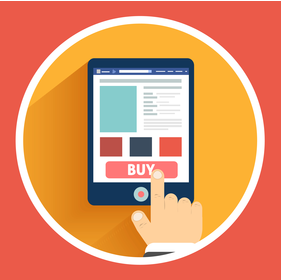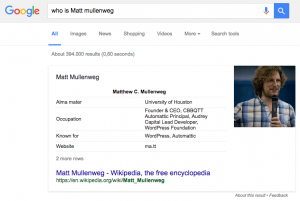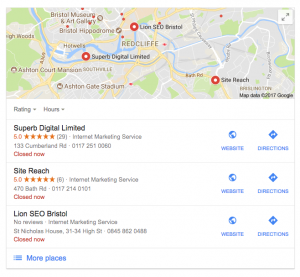
A typical salesperson starts his day with a database full of unqualified prospects—a database that was populated by buying advertising, attending trade shows, purchasing prospects lists, or other networking activities. So, who do you call first? How do you know where to start? Here’s a proven way to help your salespeople find the prospects that are most ready to buy.
Finding a Needle in The Sales Prospecting Haystack
For each prospect, the database may hold a name, physical address, phone number and an email address. That’s it. There’s likely zero information that can actually help a salesperson decide whether to contact Prospect A or Prospect B today.
This grey area is where behavioral email segmentation can be really useful. Instead of just starting at the top of your database, picking up the phone and hoping for the best, this process allows self-educating buyers to systematically tell you how interested they are in your company and which products they’re most likely to buy! It’s like being able to read your prospect’s mind.
Step One: Creating Buying Signals
For illustration purposes, let’s say you have a database of 2,000 prospects. In order to segment those 2,000 prospect database into hot, warm, and cold leads, you need to understand how interested each person is in your products, right? By devising a well-planned series of emails, you can create a system that lets your prospects unknowingly send you their buying signals and segment themselves for you. This way, you can qualify all 2,000 prospects at once.
As you begin this process, it’s important to have the right frame of mind. Most salespeople think about email in a very transactional sense. You email a prospect or customer, and the measure of success is a sale. But in behavioral email, you have to throw away that thinking.
This approach isn’t transactional—it’s a high-efficiency qualification process.
The return on investment (ROI) isn’t revenue, but knowledge. You don’t care whether your prospect buys right now. You don’t expect them to buy. You just want them to start clicking around and consuming information, because each and every time they do that, they’re sending you a behavioral cue that you can then put into a profile where you segment them behaviorally.
Step Two: Picking Your Tool
To launch your campaign, you’ll want to use an inexpensive email marketing tool such as Constant Contact, MailChimp or Emma. Each of these services enable you to send out a mass email to your database with links that are trackable down to the individual email address level. This way, you’ll be able to view each of your contacts’ individual email open/click activity.
If your company has access to higher end email marketing tools, that’s even better and will likely make the process easier. The point here is, don’t think you have to break the technology bank in order to perform this kind of segmentation.
Step Three: Defining Your BEL
Behavioral Email Logic (BEL): The most important and most difficult step of this process is designing what’s called your Behavioral Email Logic (BEL). To create your BEL, you first need to define the core message content of each email you plan to send. Then you’ll hypothesize what a prospect’s behavior (choosing to delete an email, open it, or open it and click through to your website) might be telling you. For your first campaign, this might feel like a guessing game. But I promise it will get easier.

You’ll use your hypotheses to create a sequence of emails automated to send based on the prospect’s delete/open/click pattern. For instance, maybe you’ll decide that any time a prospect deletes two emails in a row, the prospect is terminated. That person would receive no further emails under this campaign. Likewise, if the prospect opens two emails in a row and click through to your website from both emails, that person receives a specific third email message. Prospects who open two emails in a row without a click receive an entirely different third message. And so forth through all the possible delete/open/click patterns.
The goal of the BEL is simple: By sequencing the messages in a predefined pattern, you can attempt to interpret what the delete/open/click behaviors communicate. At the most basic analytical level, this delete/open/click behavior conveys interest. On a higher level, overlaying this activity with the content that produced the deletions/opens/ clicks provides additional data points for segmentation.
Step 4: Launch, Monitor & Report
Completing a campaign takes about six to eight weeks because you have to give prospects time to act on the emails. I’ve found that prospects either act on an email almost immediately or save it and come back to it within three to five days. So I recommend sending each wave of emails 7 to 10 days apart, giving respondents plenty of time to indicate their level of interest through their actions.
By the end of your campaign, you’ll easily notice some very eye-opening results. Out of 2,000 prospects, you might find 300 warm prospects who have opened emails, clicked on emails, and read a few items on your website. And out of those, you might have jumping out at you just a handful of truly hot prospects. These are people who not only opened emails, but also clicked on more than one email and/or read multiple items on your company’s website. Maybe these prospects even completed a lead-generation form on the website.
Obviously you’ll want to call your few hot prospects first and then work your way through the warm list. Don’t even bother calling anyone on the cold list until you’ve completely worked your way through the warm list. But more than just who to call, the data you’ve cultivated can tell you a lot about each prospect’s particular pain points. Which emails did the prospect open? What kind of content did they click on? This data, along with a quick google search and glancing through the prospect’s social network profiles, will help you craft a really focused and relevant personal outreach.
And there you have it, the beauty of behavioral email. It not only helps focus your efforts on your hottest leads, but more importantly, it tells you exactly what you need to say or sell to each one. You’re on your way to closing more sales and creating a happier, more effective sales team.
Digital & Social Articles on Business 2 Community(67)







